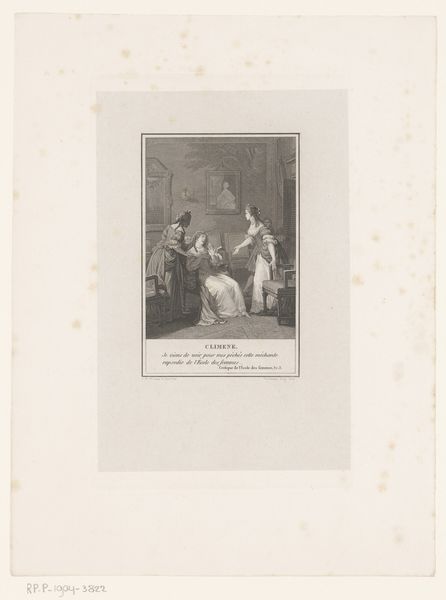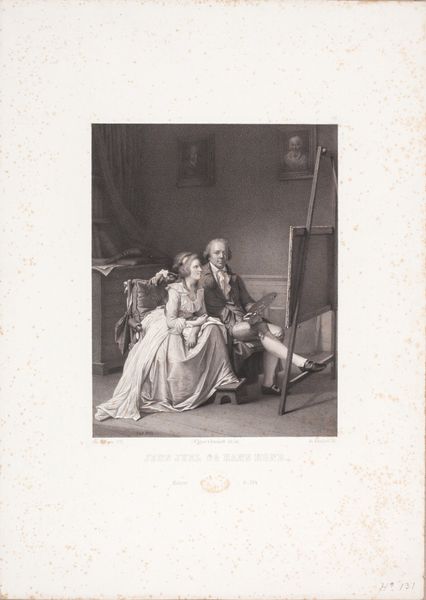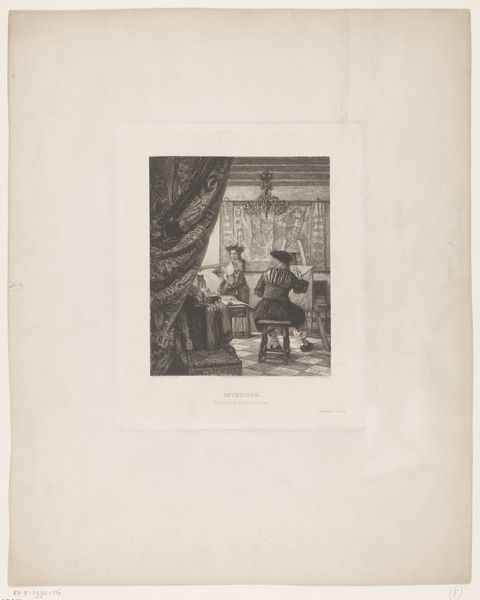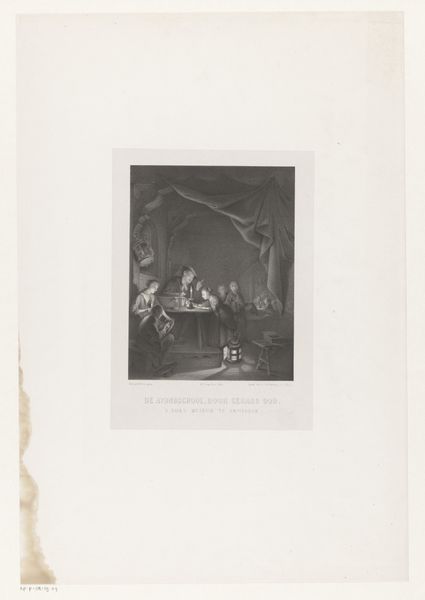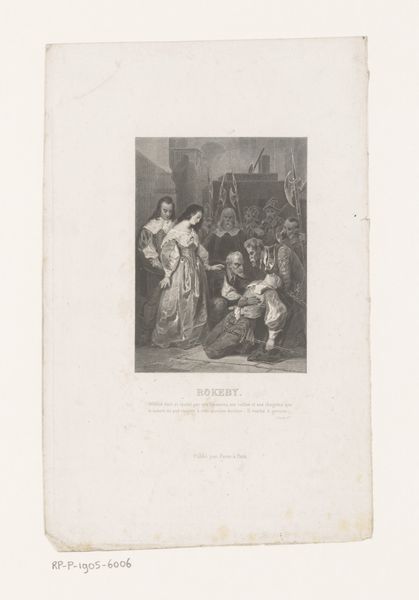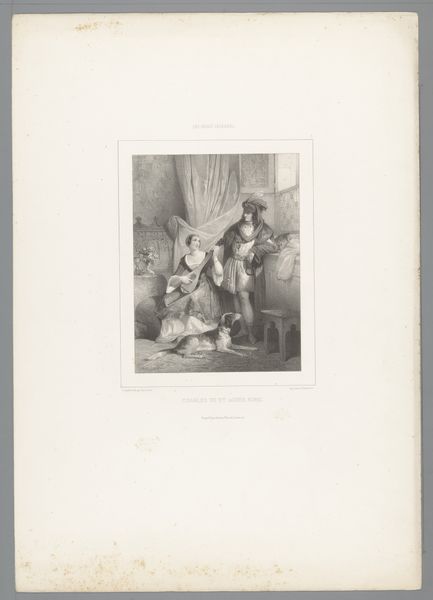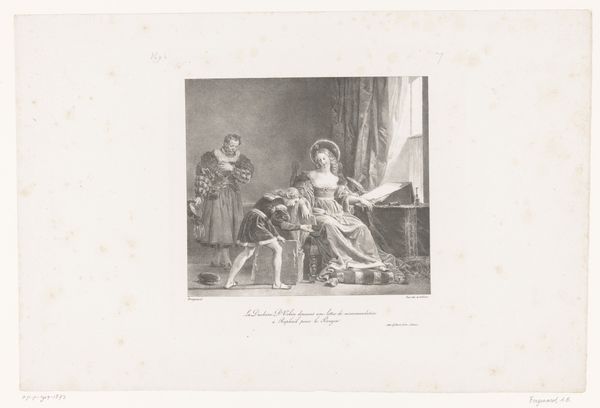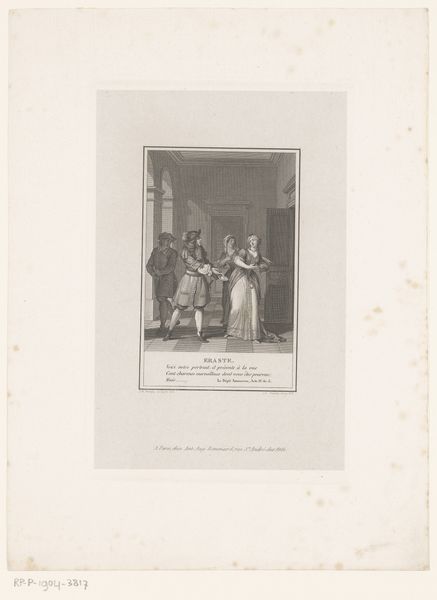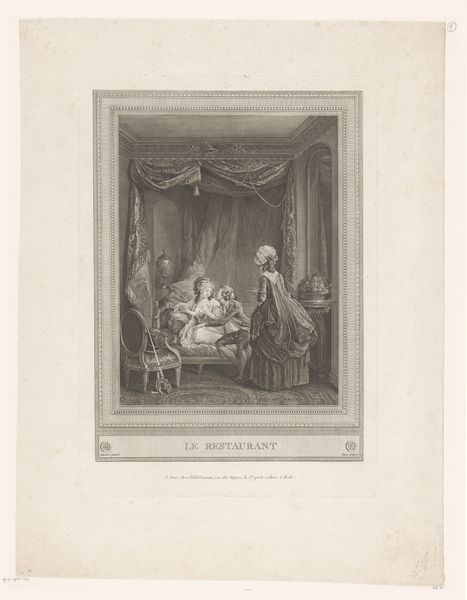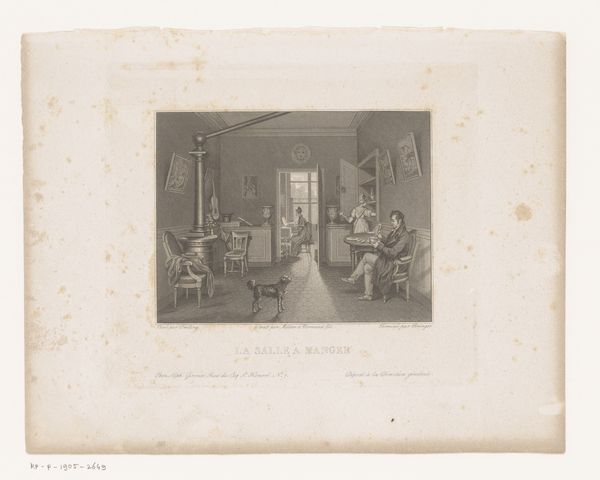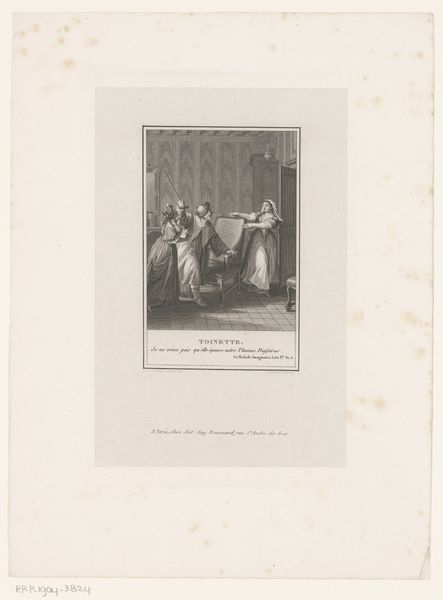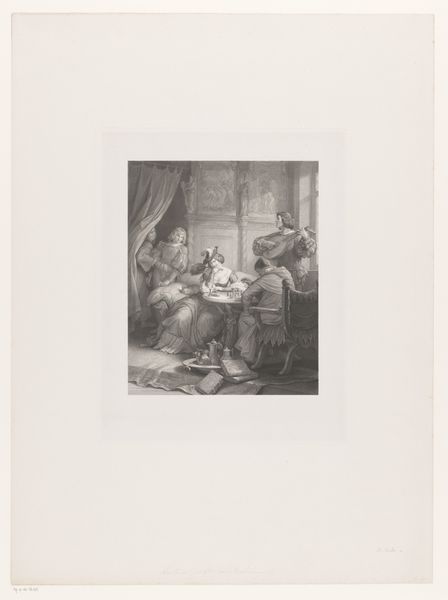
drawing, lithograph, print, paper
#
drawing
#
lithograph
# print
#
paper
#
genre-painting
#
history-painting
#
academic-art
#
realism
Dimensions: 399 mm (height) x 287 mm (width) (billedmaal)
Curator: Here we have "Children in a Painter's Studio", a lithograph from the 1880s by Adolph Kittendorff. The work employs both drawing and print techniques, all on paper. What springs to mind for you? Editor: A scene steeped in the past. The subdued grayscale palette gives it a timeless, almost sepia-toned quality, as if remembering something long past. There’s an uncanny still quality about the scene, punctuated with quiet. Curator: Indeed. Considering Kittendorff’s historical and academic artistic styles, and his choice of lithography as the medium, it would be pertinent to see the rise of mass-produced imagery as impacting production practices and, naturally, cultural consumption. We can observe genre-painting strategies meeting history painting, almost creating a vignette, wouldn't you say? Editor: Exactly, that blending—or blurring—of styles invites closer inspection. It teases at history, with costume and classical sculpture suggesting the antique, yet nestles in an everyday studio, all hushed activity and childhood absorption. See how a model poses rigidly on a chair, how one child brandishes an outsized palette and another beats on what looks like a tambourine...all is held still under the gaze of art and posterity. Is the domestic performative? Curator: Right. Consider then the layers of labor presented here. There's Kittendorff himself, the printmaker, facilitating a means for wider circulation and visibility; the artist-figure portrayed within; child actors both playing *in* the atelier and participating, through performance and instrumentation, in this world-making, this social theatre of art-making itself. The labor is replicated. Editor: Yes, but there’s a curious warmth amidst it all—those chubby-cheeked cherubs amidst plaster casts, fabrics, easels, musical noise, children, not lost, but free, enfolded in process. A playful sort of making, in which labor and love seem inextricably bound. And it invites me in! I wish I were there, hidden amongst all these materials and this tableau. Curator: Agreed. I am struck, reflecting on our conversation, by the different economies circulating through it, as a lithograph—reproducible, accessible, widely disseminated, a kind of commodity; versus the unique scene represented, caught in the imagined glow of artistic creation. Editor: So, here is art inviting life and life becoming art. What better use could either possibly have?
Comments
No comments
Be the first to comment and join the conversation on the ultimate creative platform.
